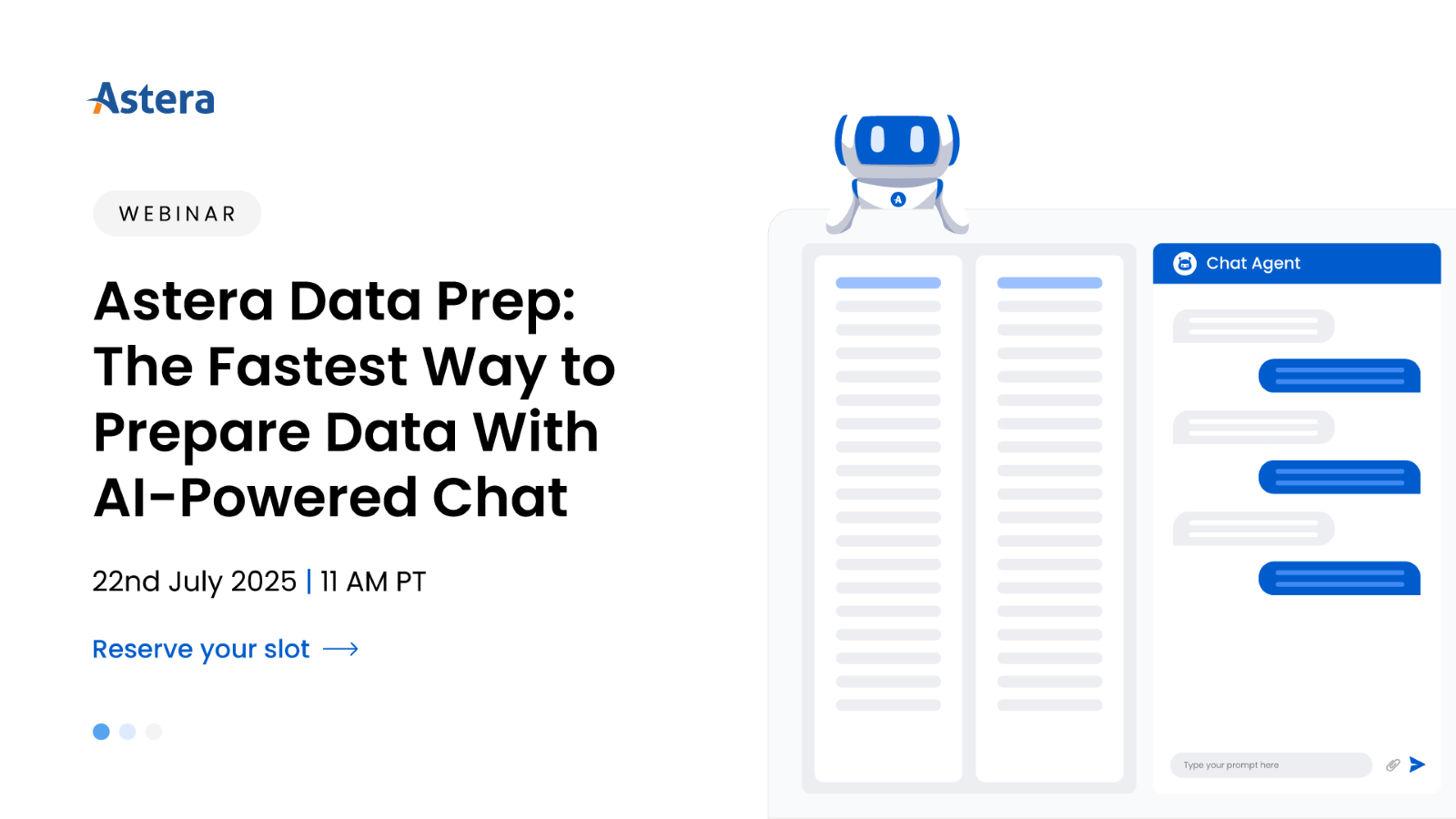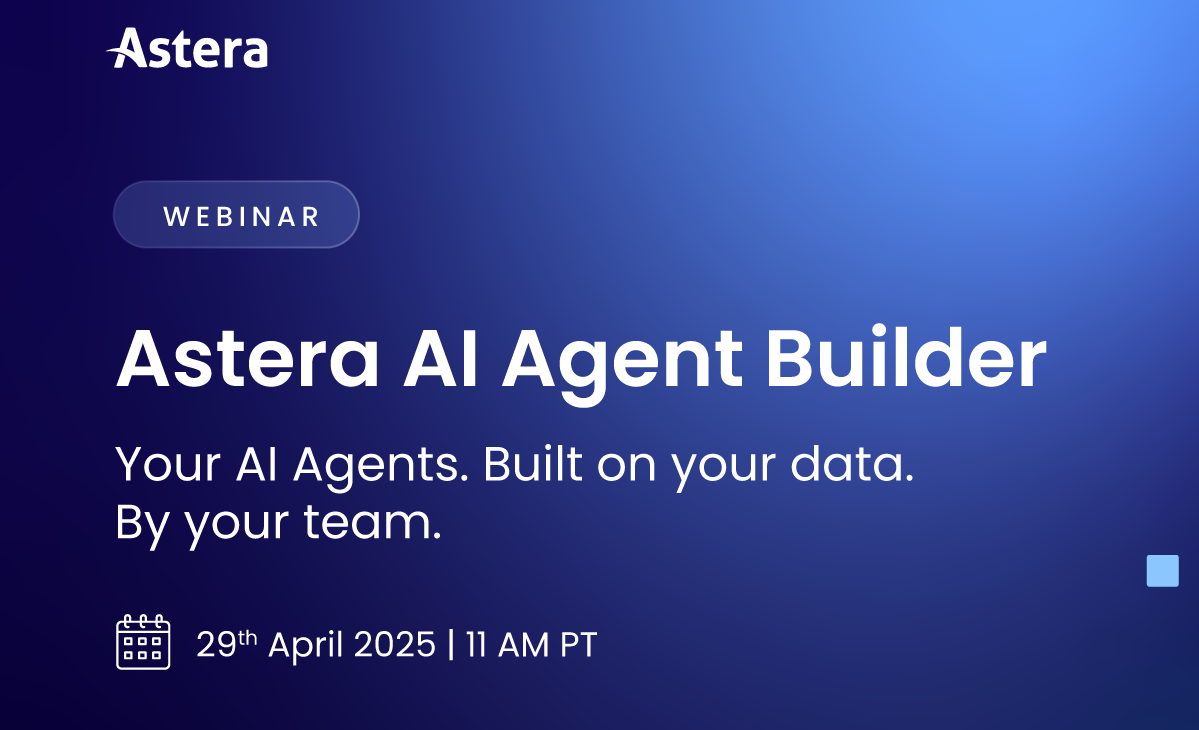
Data Warehouse Modernization: A Complete Guide
Legacy systems are often deeply ingrained in a company’s operations, especially one that has been operating for many years. Organizations often continue to rely on these systems, such as data warehouses, since any changes to the IT infrastructure involves potential risks However, today data warehouse modernization is an absolute necessity, given the unprecedented increase in data volumes and complexity.
This blog serves as your guide to data warehouse modernization. We will talk all about the key drivers, the strategies and the factors you need to consider before modernizing your data warehouse.
What is Data Warehouse Modernization?
A data warehouse is there to help you make better decisions. But long gone are the days when a daily report at day’s end would be good enough to meet most of your business’s demands. Businesses now need valuable insights and reports in real-time, and legacy data warehouses cannot keep up with these modern data demanhttps://www.astera.com/solutions/technology-solutions/data-warehousing/ds; neither were they designed to do so.
Data warehouse modernization is all about revamping and extending your data warehouse infrastructure to reap the benefits of newer, more advanced technologies. It involves adopting modern data storage, processing, and analytics solutions, often including cloud-based platforms, to improve scalability, agility, and overall performance.
It also entails migrating and transforming data, optimizing query performance, strengthening data governance, and ensuring compliance, all while enabling organizations to harness the power of big data, real-time analytics, and advanced business intelligence for more informed decision-making.
Design, Develop, and Deploy High-Volume Data Warehouses with Zero Coding
Read Solution BriefKey Drivers of Data Warehouse Modernization
Every business has its own reasons for modernizing its data warehouse, but there are some common drivers that are equally applicable. These include:
Business drivers
The most critical drivers of data warehouse modernization are often business-related, and rightly so—the true ROI of a data warehouse is measured by its ability to support better business decisions. Here is a list of the most common ones:
- New business requirements: As a business expands, it needs more and more data to support its business goals. But, as a data warehouse ages, its ability to support new business requirements becomes limited. Ultimately, it becomes essential for businesses to move towards modernization to ensure that they keep receiving accurate, timely insights from their data.
- Better collaboration between IT and business users: Often business teams and IT teams have separate, misaligned goals, which causes delays in reporting and analytics. Imagine a scenario where business users want to add a new KPI to one of its reports, but the IT team is too busy with the upkeep and maintenance of a legacy data warehouse.
- Support for self-service BI and analytics: Business Intelligence (BI) and analytics tools have evolved significantly in the past decades, making it easier for business users to generate the reports and insights they need directly from data. But, if you still have a legacy data warehouse at the backend, it can be difficult to match the speed and volume of data that business users expect and need for self-service.
- Pressure from the competition: Real-time insights are one of the smartest tactics to beat the competition. Real-time insight allow businesses for tuning sales and marketing campaigns, which legacy data warehouses are not designed to deliver.
Technological drivers
Any IT team working with the maintenance and upkeep of a legacy data warehouse knows how challenging it can be. Here are some of the most pressing technological drivers for DW modernization:
- Support for modern platforms and systems: As a business, it is important to stay on top of technological advancements to make your processes more efficient and reliable. A great example of this is how far along zero-code ETL tools, self-service BI, and DW automation platforms have come in the last decade. From hand-coding data and reporting pipelines to automate almost every aspect of data warehousing leading to faster, accurate reporting and analytics solutions, modernizing your architecture opens pathways to integrating newer technologies for agile decision making.
- New data types: Data now comes in all sizes and shapes (or should we say ‘types’). We have structured data, semi-structured data, and unstructured data (that is stored in plain text or JSON format) and newer platforms such as NoSQL. To be able to process and store all this data, businesses must extend their data warehouse to support such data types and platforms.
Strategic drivers
Strategic drivers are about being proactive and looking towards the future to ensure that your business has a scalable, cost-effective data warehouse. The goal here is to save time, money, and effort that is being spent on maintaining, upgrading, and upkeeping your data warehouse. Some of the important strategic drivers are:
Need for scalable, flexible architecture: Most legacy data warehouses were designed keeping a uniform, consistent reporting structure in mind. However, such an architecture is rigid towards incorporating meet new requirements. It also requires a lot of capital and preplanning to scale for accommodating growing volumes of data. As the need for scalability and flexibility grows, businesses need to look towards a modern data warehouse architecture that can expand and change as and when business requirements change.
Better security, privacy, and governance: Since the introduction of GDPR, businesses have been keen to improve data governance and take security initiatives to protect their data. One strategic driver for modernization is to adopt best security practices and adhere to modern standards and regulations to improve the security, privacy, and governance of your data warehouse. For example, modernizing your architecture gives you the opportunity to discover and document every aspect of your data, who used it and how, and all the processes it has been through before it reached its final destination. This enables you to ensure better governance and compliance with the provision for quick traceability if any problem arises.
Cost reduction: Modern data warehouse tools such as Astera DW Builder make it much simpler to build and maintain a data warehouse and reduce the costs in multiple ways. For starters, these user-friendly and intuitive tools give you the advantage of working with a single, unified platform that handles all the major aspects of building a modern data warehouse, such as data modeling, ETL code generation, metadata management, data quality management, and profiling, and several others. In addition, they offer a no-code/low-code development environment to allow you to work with a small team of developers, saving costs associated with hiring additional resources. Lastly, such tools allow you to work in quick iterations, enabling your team to introduce changes to your data warehouse at the speed of business.
Data Warehouse Modernization Strategies
How do you go about data warehouse modernization? Do you rip everything out and rebuild from scratch, or do you add on top of your existing data warehouse? You can do both. Here are the three most effective methods of data warehouse modernization:
1. Cloud Data Warehousing
The first method is to move your on-premises legacy systems to a cloud-based data warehouse. There are several advantages of this approach, including:
- The pay-as-you-gomodel of the cloud helps reduce costs significantly – you only pay for the storage and compute that you use.
- Higher elasticity since you can easily scale a data warehouse on the cloud as the volume of data increases.
- Zero maintenance and support costs.
- Integrations with other cloud-based services and applications are much easier and quicker.
Keeping in mind these benefits, we recommended this approach for businesses that want to reduce the high costs and complexity of maintaining on-premises infrastructure. In fact, statistics even show that a majority of data warehouses are now already partially or completely on the cloud.
2. Data Warehouse Automation
Data warehouse automation (DWA) plays a significant role in enabling and facilitating data warehouse modernization efforts. DWA tools automate many time-consuming and repetitive tasks involved in data warehousing, such as ETL processes, code generation, and schema design, which accelerates the development and deployment of data warehouses.
A major part of data warehouse automation involves responding to changing business requirements and data sources. DWA supports agile development methodologies, making it easier to iterate on data warehouse designs and adapt to evolving needs.
3. Extend your existing data warehouse
Sometimes, businesses might want to keep their on-premises and legacy systems for reasons such as compliance and security. But this does not mean that they cannot reap the benefits of modernization. In such scenarios, extending your existing data warehouse is the recommended method to modernize your data ecosystem.
In this method, you integrate your legacy sources with modern tools and cloud platforms to improve the scalability and agility of your data warehouse. While some legacy components remain intact, other components are modernized, and you build on top of that to add new functionality using modern integration and automation tools.
The benefits of this approach are:
- Additional processing power and storage capacity can be added on-demand with a modern cloud platform, improving scalability and reducing costs for hardware upgrades.
- Allows you to have a more controlled environment for experimenting with the modern platforms and the cloud since you already have your existing data warehouse in place.
4. Start a New Project
This method involves using modern tools, platforms, and practices to launch a new data warehouse initiative. For example, if you plan to launch an analytics initiative for a business unit, it can be a good opportunity to launch this new project with modernization in mind.
In contrast to launching a new analytics project using legacy systems, the benefits of this method are:
- Support for an agile and flexible development effort since modern tools and cloud platforms allow you to experiment, test, and evolve ideas rapidly without heavy investment or long development times.
- Better support for DW automationtools and solutions such as Astera DW builder allows you to scale and expand your analytics effort with minimum effort.
If you are yet to build a data warehouse or feel that your existing data warehouse will not be able to support your next analytics initiative, then this approach is recommended to ensure better performance and speedy results.
Migrate to a Modern Data Warehouse With Zero Coding
14-Day Free TrialHow to Implement Data Warehouse Modernization
Modernizing a data warehouse is a complex and critical endeavor that involves a range of considerations to ensure a successful transition. Here are some key factors to keep in mind:
- Assess your current situation
Make a list of all the data sources and see what data needs to be migrated. You cannot just dump all data in your data warehouse. So, pick and choose the data you need for your analysis.
- Choose the right technology
When you know your business objectives, you need to choose the technology/platform for your data warehouse. You can either choose from Google BigQuery, Amazon Redshift or even Snowflake. All of these platforms support different data warehousing architecture. For example, Snowflake has different components for storage and compute, which you can scale easily. For others, you might need to complement them with a data storage solution such as Amazon S3.
- Data Integration
Once you have the list of your data sources, you need a strategy to integrate data from all of these sources. You can opt for a data integration tool that comes with built-in connectors, so it is easier to connect to these sources and extract data from it.
- Build Modern ETL Pipelines
What do we mean by modern ETL pipelines? In the past, developers used to write code to build ETL pipelines. These manual pipelines were prone to errors and couldn’t handle large volumes of data. Modern ETL pipelines are fault resistant, and automated as well.
You can use a zero-code ETL tool like Astera Centerprise to build ETL pipelines in a visual interface.
When you ETL pipelines with Astera Centerprise, you get built-in data quality checks and validation mechanisms to identify and address data quality issues during the ETL process.
Moreover, you can schedule and orchestrate ETL jobs, making it easier to manage and automate complex workflows.
- Ensure Data Quality
The entire success of your project depends on whether you migrated quality data to your data warehouse, which is why it is important to implement stringent data quality measures. Before doing anything, establish a robust data governance framework with clear roles and responsibilities. Appoint data stewards who are responsible for data quality in their respective domains. Once you are done with that here are a few more things you can do:
- Define data validation rules and business rules to ensure data quality at the source and then enforce these rules during ETL processes.
- Implement data lineage and traceability features to track the origin and transformation of data to help you identify where data quality issues were introduced.
- Use data transformations to handle null values, inaccuracies and standardize data formats.
- Start Data modeling
You need to select a data model that fits your business requirements. For example, opt for a star schema when your primary goal is to optimize query performance and simplify data retrieval for analytical or reporting purposes. In case there are complex relationships in your data, then it is better to choose a Snowflake schema.
- Implement Cost Management
One of the most important factors that you need to consider is cost management. Cloud data warehouses offer the pay-as-you-go model. However, costs can quickly get out of control. So make sure to choose the appropriate computing and storage resources based on your actual needs.
Avoid over-provisioning, as it can lead to unnecessary costs. Implement data archiving and retention policies to manage historical data efficiently. Move less frequently accessed data to lower-cost storage options, such as object storage, while keeping frequently used data in high-performance storage.
Consider using cloud-based data tiering and cold storage options to further reduce costs for less frequently accessed data.
Data Warehouse Modernization: What’s the Next Step?
Moving to a cloud data warehouse is just one part of the story, you also need to keep in mind the after care and maintenance of your new infrastructure. Here is what you need to do next:
- Monitor the time it takes for queries to execute in the data warehouse.
- Identify slow-running queries and determine the cause of the delay.
- Set up error and exception handling mechanisms to log and monitor issues, such as query failures and performance bottlenecks.
- Implement caching mechanisms to store frequently accessed query results. Caching can reduce the workload on the data warehouse for commonly requested data.
- Implement data partitioning strategies for large tables to improve query performance by reducing the amount of data that needs to be scanned.
- Regularly review data archiving and tiering strategies to ensure that historical data is appropriately stored and accessible when needed.
- Ensure that data retention policies are followed. Archive or delete data that is no longer needed, and implement data purging strategies.
A Game-Changing Solution for Data Warehouse Modernization
The benefits of the modern data warehouse are immense, and you don’t want to wait until your legacy systems give in and stop delivering value before you take the modernization initiative. If you are looking for a reliable and powerful solution for data warehouse modernization, Astera DW Builder is the answer.
Astera DW Builder is an all-in-one data warehouse suite that uses a metadata-driven architecture to help build and manage your data warehouse. Whether you want to take your enterprise data architecture to Snowflake, Microsoft Azure, Oracle, or Amazon Redshift, you can rely on the platform to modernize your data warehouse into the desired destination. You can perform dimensional data modeling, bring data with 40+ sources, build ETL pipelines, generate target-platform native code, apply 600+ transformations, and perform data warehouse automation, all through a single platform.
Astera DW Builder lies at the very heart of the modern data warehouse, looking after all the low-level development for you so your IT team can focus on the outputs (i.e., high-quality insights and reports) rather than the process. Explore how you can ensure the success of your data warehouse modernization project with Astera DW Builder by scheduling a demo with our product experts today





